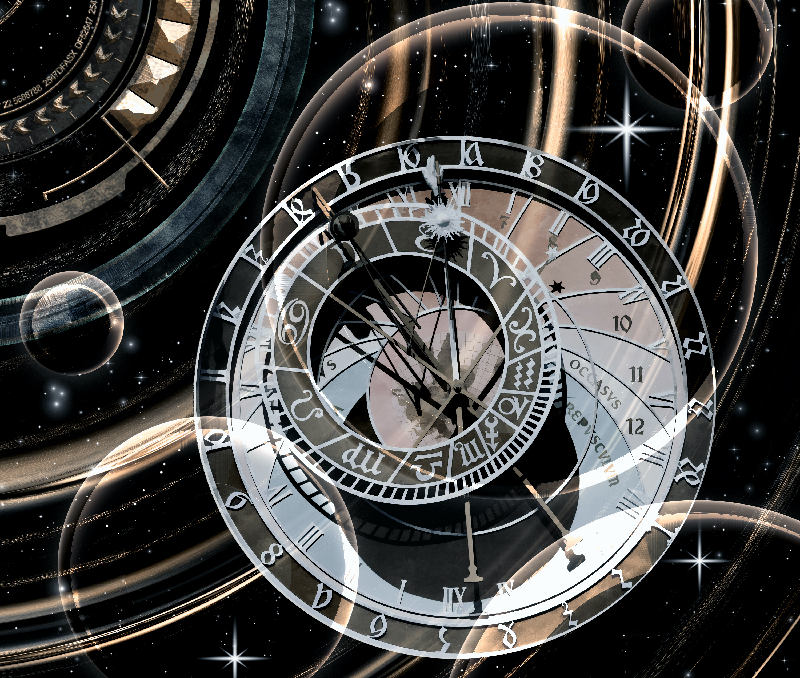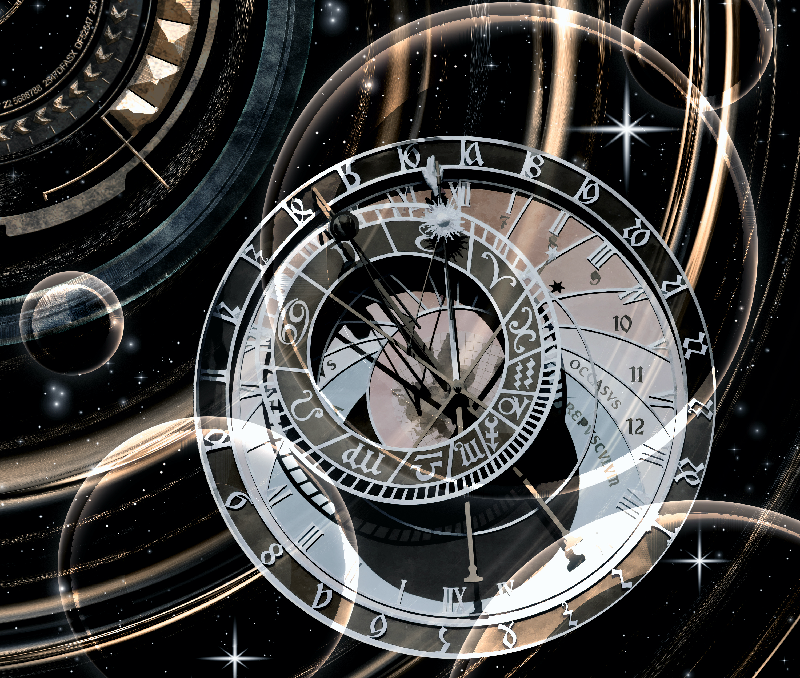The Period of the Universe’s Clock
A trio of theorists has modeled time as a universal quantum oscillator and found an upper bound of seconds for the oscillator’s period. This value lies well below the shortest ticks of today’s best atomic clocks, making it unmeasurable. But the researchers say that atomic clocks could be used to indirectly confirm their model’s predictions.
Physics has a time problem: In quantum mechanics, time is universal and absolute, continuously ticking forward as interactions occur between particles. But in general relativity (the theory that describes classical gravity), time is malleable—clocks located at different places in a gravitational field tick at different rates. Theorists developing a quantum theory of gravity must reconcile these two descriptions of time. Many agree that the solution requires that time be defined not as a continuous coordinate, but instead as the ticking of some physical clock, says Flaminia Giacomini, a quantum theorist at Canada’s Perimeter Institute for Theoretical Physics (PITP).
Such a fundamental clock would permeate the Universe, somewhat like the Higgs field from particle physics. Similar to the Higgs field, the clock could interact with matter, and it could potentially modify physical phenomena, says Martin Bojowald of Pennsylvania State University in University Park.
But researchers have yet to develop a theory for such a clock, and they still don’t understand the fundamental nature of time. Aiming to gain insights into both problems, Bojowald and his colleagues imagined the universal clock as an oscillator and set out to derive its period. Their hope was that doing so might offer ideas for how to probe time’s fundamental properties.
In the model, the team considers two quantum oscillators, which act like quantum pendulums oscillating at different rates. The faster oscillator represents the universal, fundamental clock, and the slower one represents a measurable system in the lab, such as the atom of an atomic clock. The team couples the oscillators to allow them to interact. The nature of this coupling is different from classical oscillators, which are coupled through a common force. Instead, the coupling is imposed by requiring that the net energy of the oscillators remains constant in time—a condition derived directly from general relativity.
The team finds that this interaction causes the two oscillators to slowly desynchronize. The desynching means that it would be impossible for any physical clock to indefinitely maintain ticks of a constant period, placing a fundamental limit on the precision of clocks. As a result, the ticks of two identically built atomic clocks, for example, would never completely agree, if measured at this precision limit. Observing this behavior would allow researchers to confirm that time has a fundamental period, Bojowald says.
Bojowald and his colleagues used the desynchronization property to derive an upper limit of seconds for the period of their fundamental oscillating clock. This limit is times shorter than the tick of today’s best atomic clocks and times longer than the Planck time, a proposed length for the shortest measurable unit of time.
Resolving a unit of Planck time is far beyond current technologies. But the new model potentially allows researchers to get much closer than before, says Bianca Dittrich, who studies quantum gravity at PITP. Bojowald agrees. Using the timescale of the desynchronization between clocks to make time measurements, rather than the clocks themselves, could allow for measurements on much shorter timescales, he says.
Another bonus of choosing an oscillating quantum system as the model for a fundamental clock is that such a system closely resembles clocks used in the lab, says Esteban Castro-Ruiz, of the Université Libre de Bruxelles, who studies problems involving quantum clocks and gravity. The resemblance is key, says Castro-Ruiz, because it “brings the question of a fundamental period of time to a more concrete setting, where one can actually start thinking about measurable consequences.”
This research is published in Physical Review Letters.
–Katherine Wright
Katherine Wright is the Deputy Editor of Physics Magazine.





